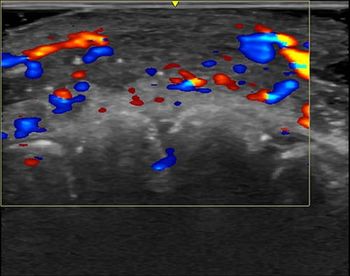
Elements of a Successful Radiology Practice
CHICAGO-How to design a successful radiology practice.
The key to running successful radiology practice lies within a combined effort of selecting the appropriate teams, developing the appropriate topics for the team to support, and then defining quality and process improvement strategies that are uniquely suited for your practices specific needs.
“Every institution is different” David Baker, MD, executive VP for Healthcare Quality Evaluation, Joint Commission, said at RSNA 2015, and so it is important to create a unique approach based on specific practice problems using the proper quality improvement (QI) and process improvement (PI) tools.
Team engagement within the practice has many benefits, including a more widespread implementation of processes, the ability to take advantage of diverse talents and ideas, and the achievement of improving relevant specific goal-related opportunities. Team-focused models are also externally motivated by the CMS and agencies including the Joint Commission. Such engagement validates that “it’s not individual competence, its collective competence,” said James Duncan, MD, PhD. He adds that the 2015 Institute of Medicine reports that “diagnosis is a team effort.”
The selection of team and topic are two areas that Duncan feels are crucial to improving practices. Many teams are multidisciplinary and may involve multiple departments. Each team member must be motivated and the subject must matter to each individual personally. Topics for teams to focus on should involve a common problem, be measurable, have data that can tell a story, and involve SMART (Specific, Measurable, Action-oriented, Realistic, Time-bound) goals. Some examples of topics that have encouraged team-focused projects include lowering dosage protocols for fluoroscopy exams or reducing radiation over usage through the examination of CT use.
Quality Improvement measures often provide the “best ideal practices where everybody follows the same practice, thus reducing variability,” according to Olga Brook, MD. One example of a QI measure is the use of a model for improvement (MFI) which defines what is attempting to be accomplished, measures how a change is verified, and allows for changing of ideas. The benefits of such QI measures are proven to improve outcomes and lower cost methods. “Improvement is about learning,” states Brook, so leadership engagement is essential, there must be a continual cycle of change, and there must be measurable progress.
QI combines trial and error with research blending the two into a model that allows a focused, specific approach and the ability to change hypothesis.
Some of the tools that the Joint Commission recommends for best practices include the organizational assessment and resource library (ORO), which is a method of evaluation of leadership used to analyze whether proper quality assessments are being performed by the executive team. The targeted solutions tool is an online tool used to guide robust process improvements through analyzing causes, selecting a target, and sustaining a solution.
Robust process improvements (RPI), the JC preferred tool, uses the combination of LEAN, Six Sigma, and change management to improve business processes, Baker said. This method of combining QI and PI allows for sustainable QI through the reduction of waste while simultaneously improving specific processes. Understanding that change management will always be your weakest link is key to managing this specific tool.
Baker further defines the JC perspective on successful practices by stating “high reliability organizations model leadership commitment, a thorough safety culture, and have RPI plans in place.” By ensuring that these three categories are in alignment, he claims that “entire safety systems function well” and that it is not possible to do only one or two of these, you must “surround the problem in order to have high reliability.”
[[{"type":"media","view_mode":"media_crop","fid":"43792","attributes":{"alt":"","class":"media-image","id":"media_crop_9924110434437","media_crop_h":"0","media_crop_image_style":"-1","media_crop_instance":"4853","media_crop_rotate":"0","media_crop_scale_h":"0","media_crop_scale_w":"0","media_crop_w":"0","media_crop_x":"0","media_crop_y":"0","title":" ","typeof":"foaf:Image"}}]]
Newsletter
Stay at the forefront of radiology with the Diagnostic Imaging newsletter, delivering the latest news, clinical insights, and imaging advancements for today’s radiologists.




























